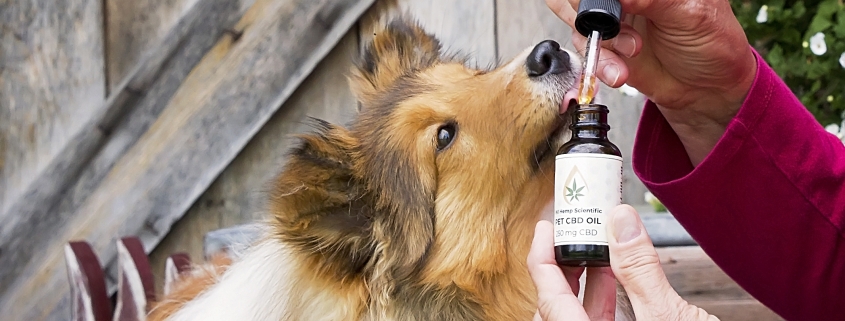BY MEGAN TREMELLING, DVM, LVS
Dilated cardiomyopathy (DCM) is a disorder in which the heart muscle becomes too weak to pump properly. Treatments exist, but many cases are fatal. It is, unfortunately, very common in Dobermans, Pinschers, Boxers and Great Danes and also occurs in other medium to large dogs such as Irish Wolfhounds, Saint Bernards and Newfoundlands as well as one small breed, the Cocker Spaniel. Because of the breed’s predisposition, we believe that there is a genetic component to some forms of the disease.
DCM can also be caused by some other problems including a deficiency of certain nutrients: the amino acids taurine and carnitine. In some cases, for example, when a dog is being fed a completely unbalanced diet, it is a simple question of dietary deficiency.
However, there are other cases in which the problem seems to be the dog’s ability to absorb or metabolize taurine properly. Cocker spaniels, in particular, can develop the disease while eating a diet that many other dogs consume without a problem. Taurine levels in the blood can be tested to prove there is a deficiency. Treatment with extra taurine and/or carnitine in these cases has enormous benefits to the heart.
Recently, veterinary cardiologists have been finding DCM at higher rates than expected in breeds that ordinarily don’t get the disease. Most of these dogs had normal taurine levels. Another thing they have in common is that the majority were eating what became known as “BEG” diets which fit into one of three categories:
1. Boutique foods such as homemade diets or those made by small pet food companies.
2. Exotic ingredients not traditionally found in dog food such as potatoes, legumes (peas and lentils), buffalo, venison, tapioca and so on.
3. Grain-free diets of any kind.
Some of the dogs got better when switched to different, more traditional food.
Could there be a connection between these BEG diets and the unusual cases of DCM? A link seems likely. What that link might be remains a mystery since taurine levels were not low in most of these dogs. Veterinary nutritionists and cardiologists are hard at work to sort out all the possibilities. The investigation starts with finding out which foods are most often connected with DCM.
The FDA has released the names of the brands most commonly implicated. Ultimately, we still have more questions than answers about diet-related DCM in dogs. We do, however, have some information that lays out a course for getting some answers as well as protecting our pets.
If you are worried that your dog may have DCM, see your veterinarian. Unfortunately, the signs of DCM in dogs can be vague. Some dogs have no signs at all. Others may have weakness, weight loss, cough, difficulty breathing and fainting episodes. Some dogs with DCM have heart murmurs, while many do not. Of course, not every dog that coughs or has a heart murmur has DCM.
Your veterinarian can take an X-ray of the chest to screen for DCM if your dog is showing signs that worry you. Other tests that may be useful include ECG (also known as EKG), bloodwork and blood pressure measurement. Measuring taurine levels may be useful in some dogs, particularly Cockers and Golden Retrievers.
The definitive test for DCM is an echocardiogram, also known as an ultrasound exam of the heart. Some veterinarians in general practice can perform this test while others refer patients to a veterinary cardiologist or other specialist. Once DCM has been confirmed, testing the patient’s blood for a taurine deficiency is appropriate, but even dogs with normal taurine levels can develop DCM as a result of their diet.
If your dog is diagnosed with DCM, in addition to treating with medications, you should follow your veterinarian’s instructions for feeding. This is likely to mean a traditional commercial dog food. By this, I mean one made by one of the big old-fashioned companies like Purina and Waltham. These are brands containing standard ingredients like chicken, beef, corn and wheat. Even if your dog does not have DCM, veterinarians involved with the research recommend avoiding BEG diets until we understand more about the problem.
Many dog owners are taken aback at suggestions that they should give their pets food made with ingredients like chicken and corn. Heavy advertising by some of the BEG manufacturers has led owners to believe that traditional ingredients are harmful to dogs or that there is some nutritional benefit to feeding an exotic or grain-free diet. There is no truth to this belief. While the idea of feeding your dog like a wolf is appealing, the fact is that dogs are not wolves. I have never heard of a pack of Pugs taking down an elk and eating it. Dogs have adapted to eat chicken and grains, and most of them do very well on them, with the exception of the minority which have allergies or food intolerances.
Some dog owners don’t trust the large dog food companies, especially after hearing about contamination and recalls. Personally, I feel safer giving my dog food from a large company. While the big dog food companies have certainly had some quality control problems over the years, they actually have fewer problems of this type than the small boutique companies. As much as I love the idea of my dog’s food coming from a family-owned startup—cooking in their home kitchen with the recipe that always kept Grandpop’s dogs in fine trim—when it comes down to it, I want my dog eating food that has been made by a company that has a research laboratory with veterinarians on staff. I want nutritional expertise. I want them testing their product for safety, decreasing the chance that any problems make it to market. I want them doing feeding trials to see what happens to a dog that eats their food, and only their food, for months at a time. I want them doing research to figure out what new tweaks they can offer to give my dog a wholesome food that will keep her healthy.
Feeding a dog food made by a large company may not be as satisfying as boutique food. It may not make me feel as if I’m treating my girl like the unique and integral family member she is. But ultimately, it’s not about my feelings; it’s about what’s good for her. I won’t risk her life to follow trends and marketing ploys at the expense of nutritional expertise.








